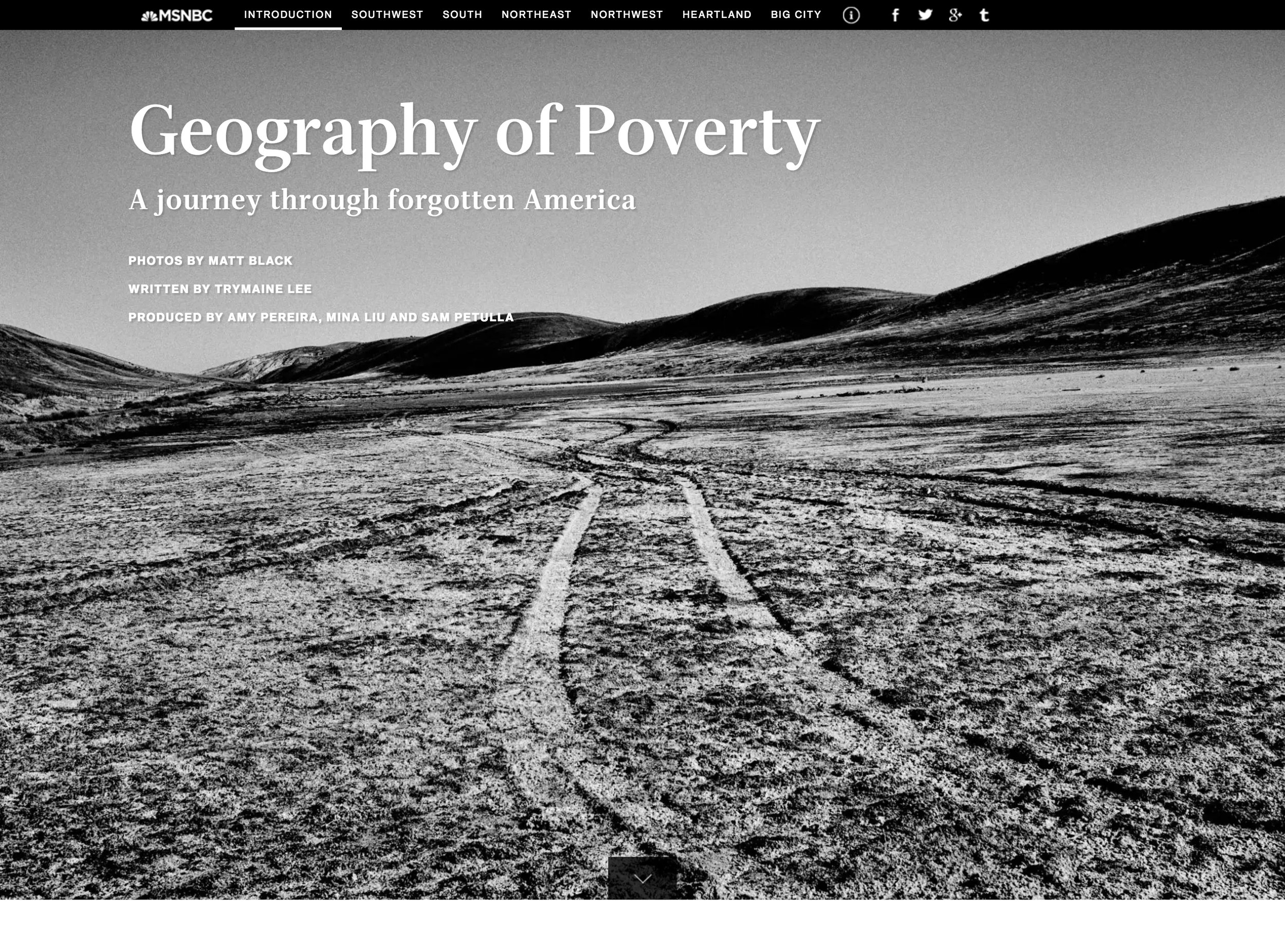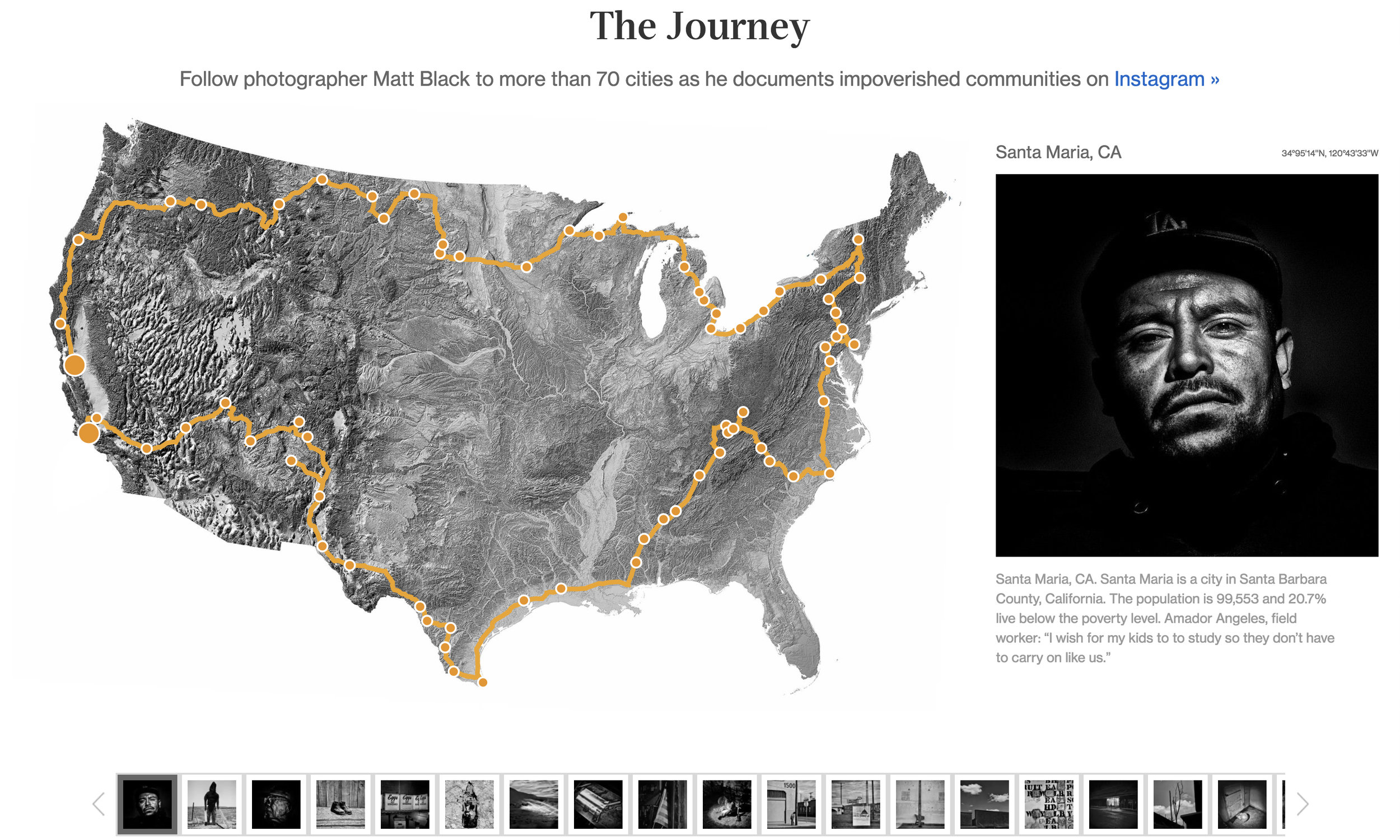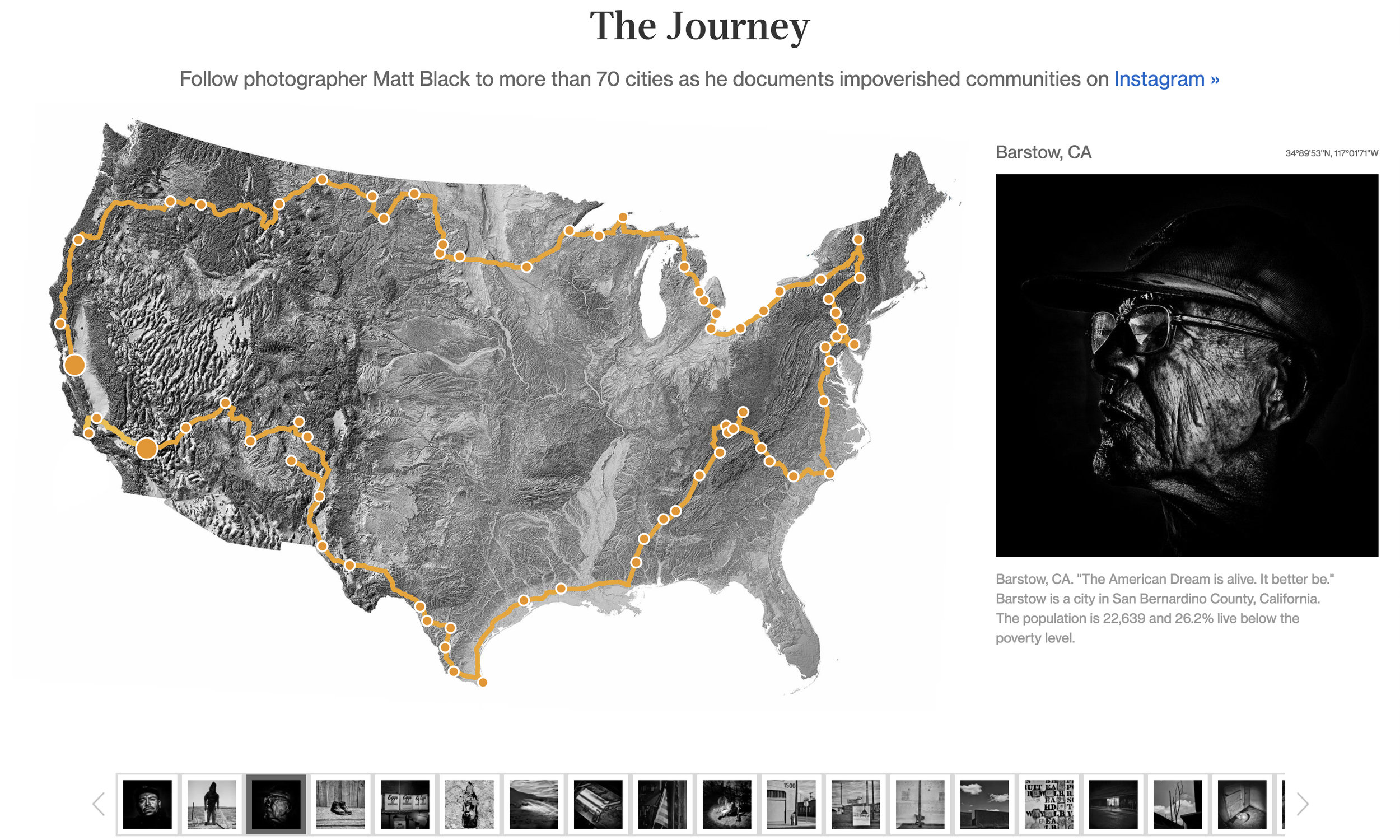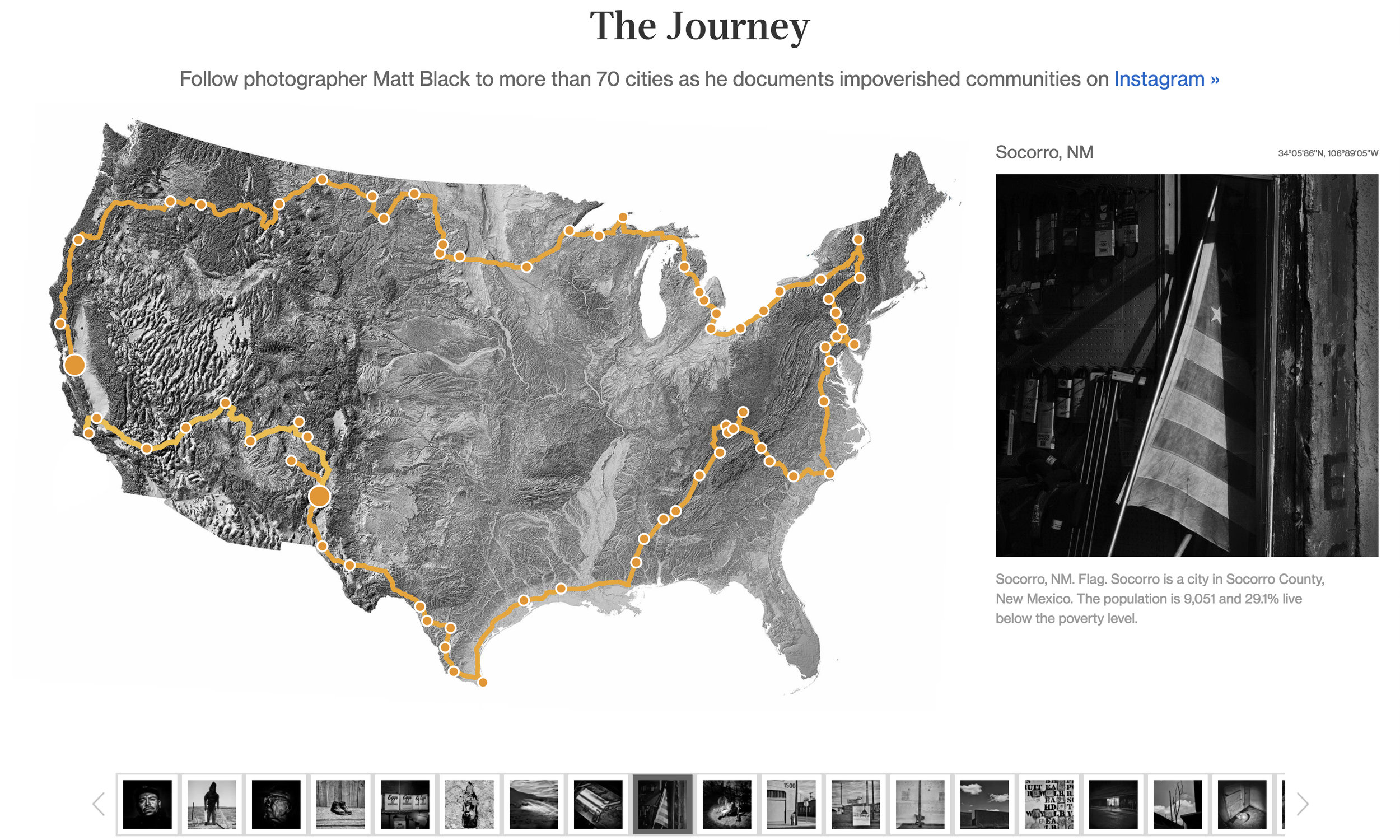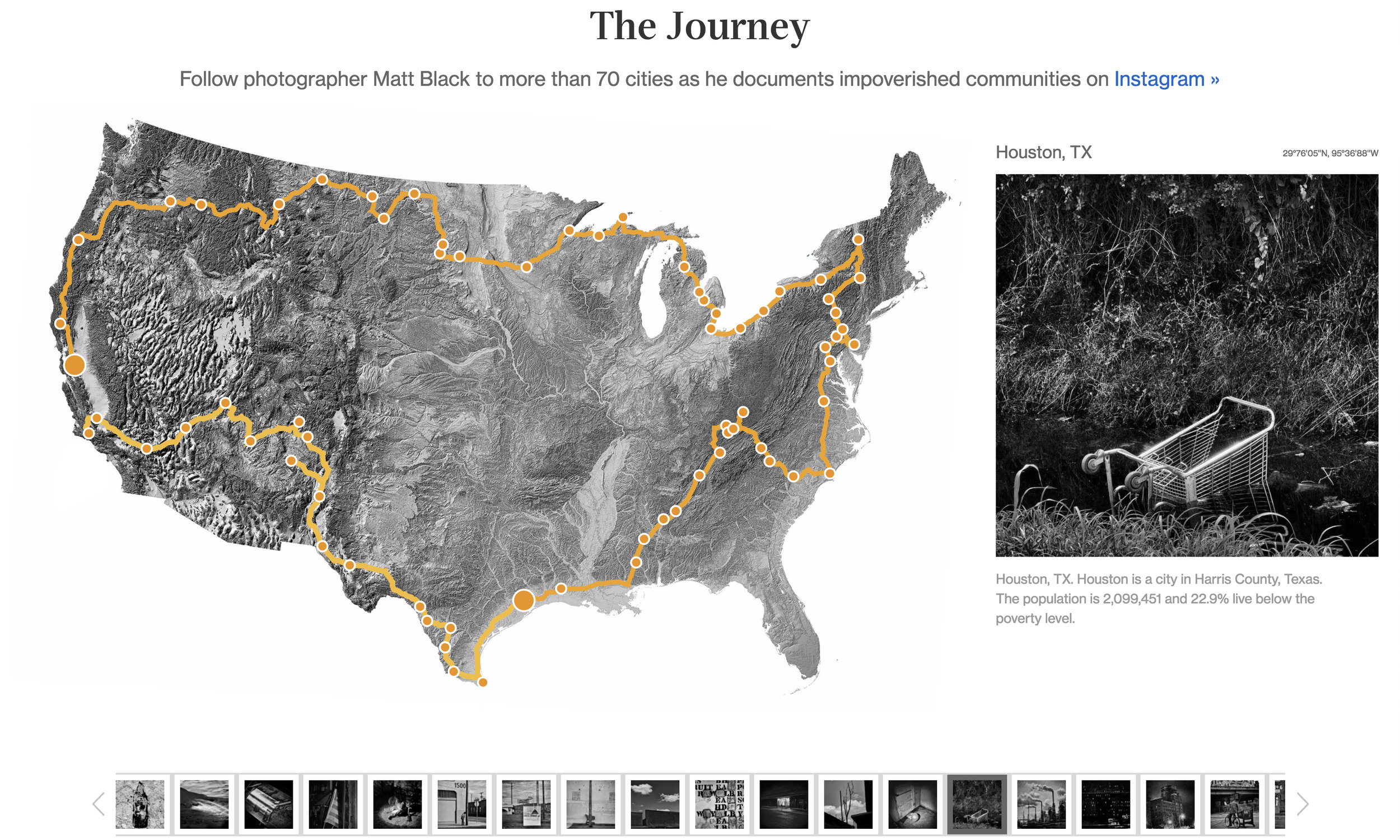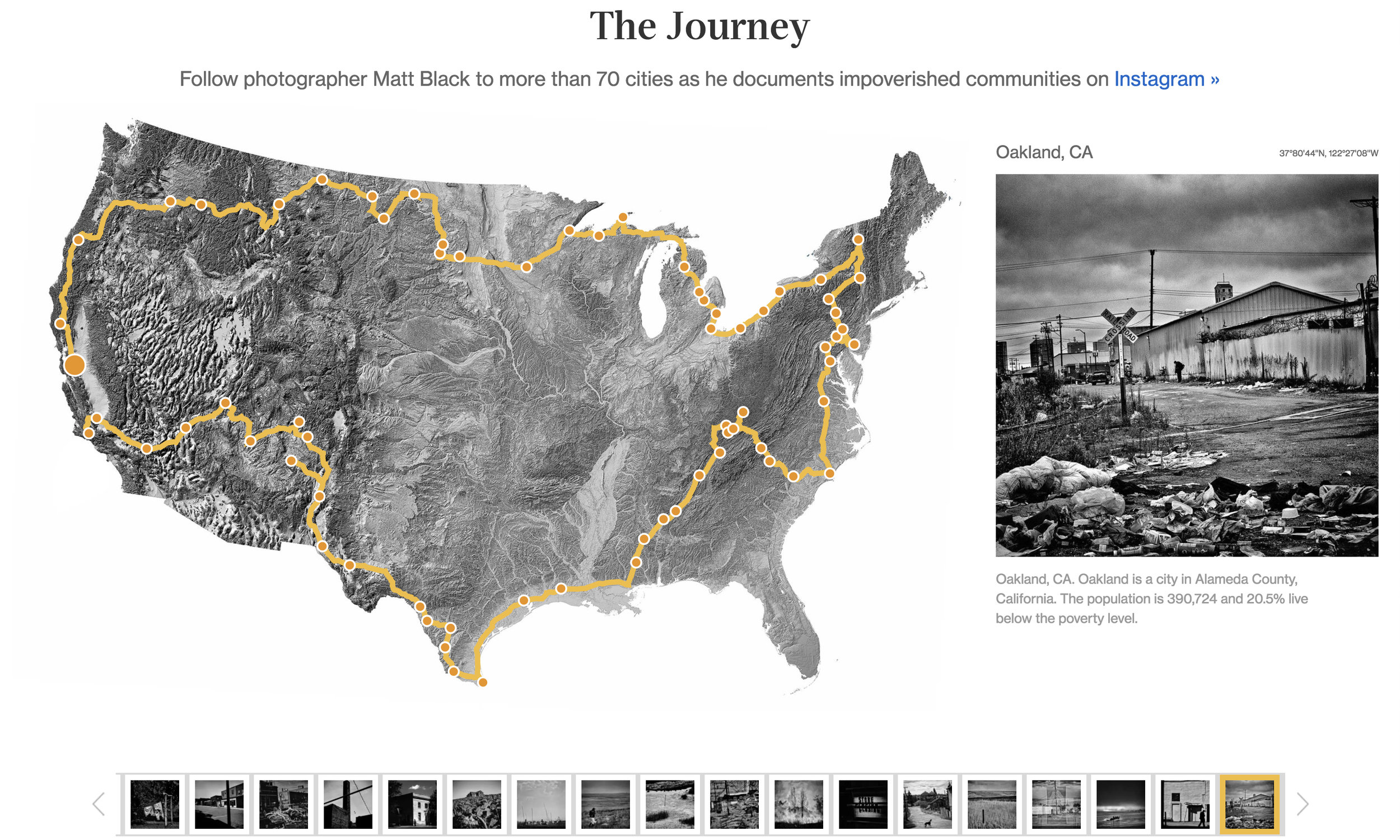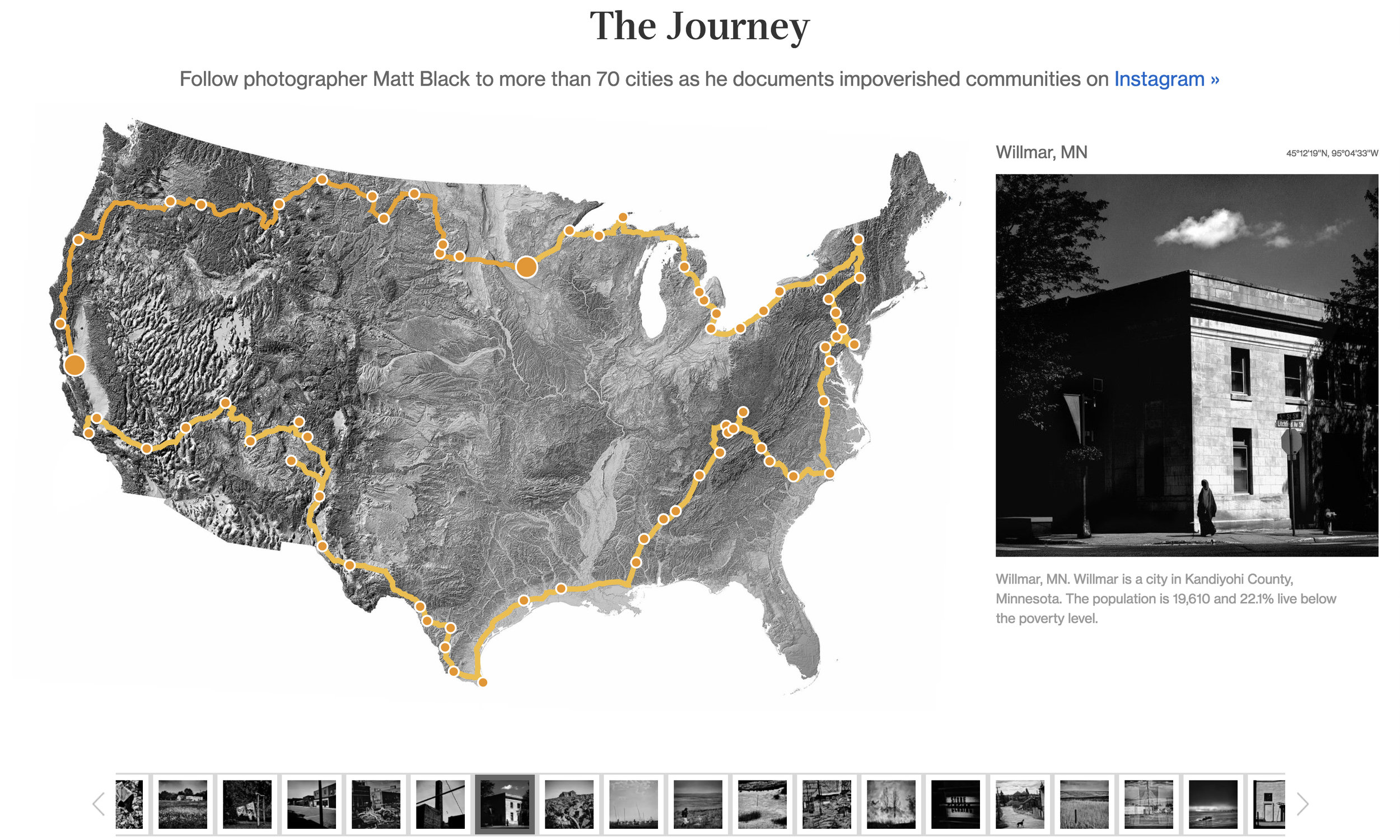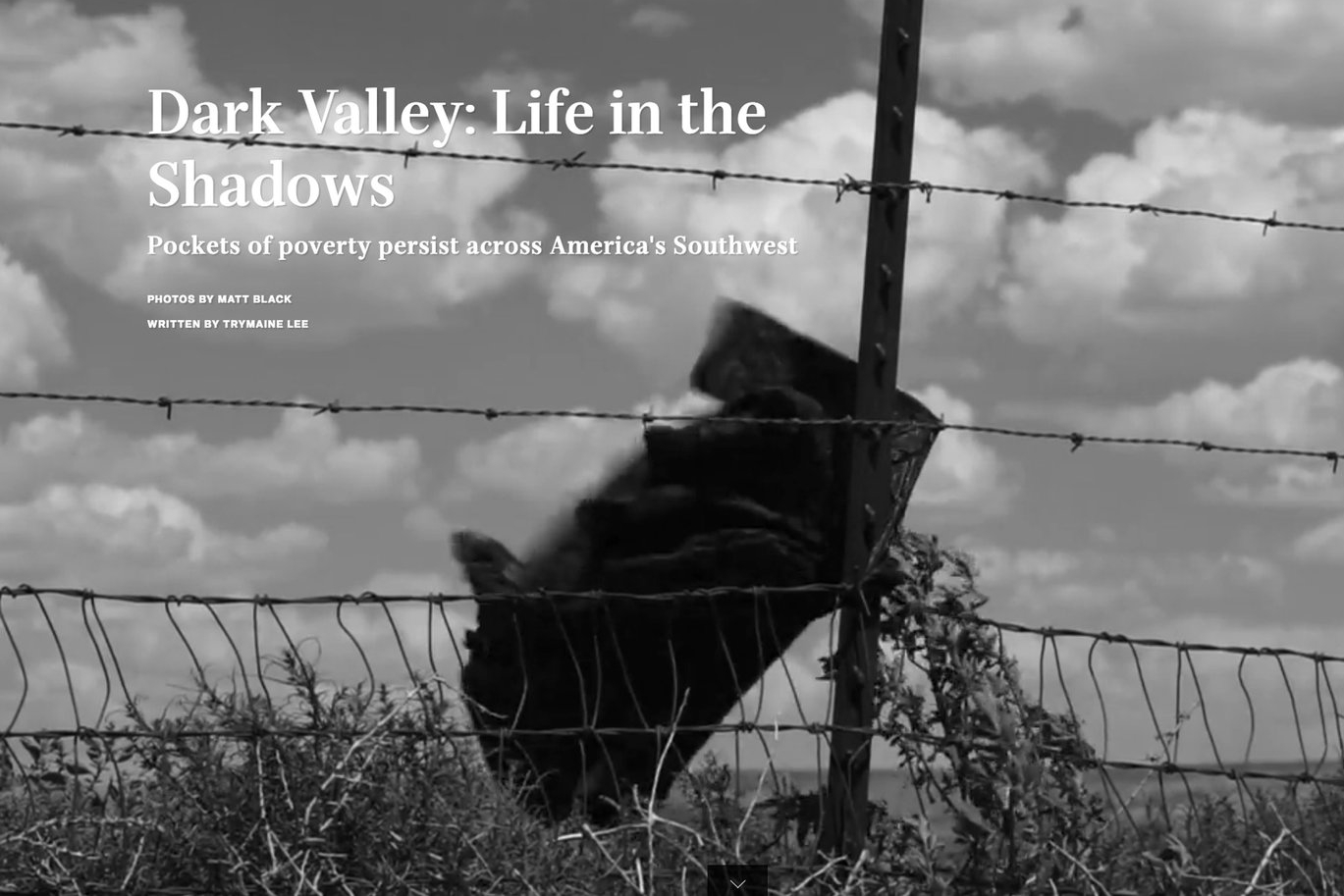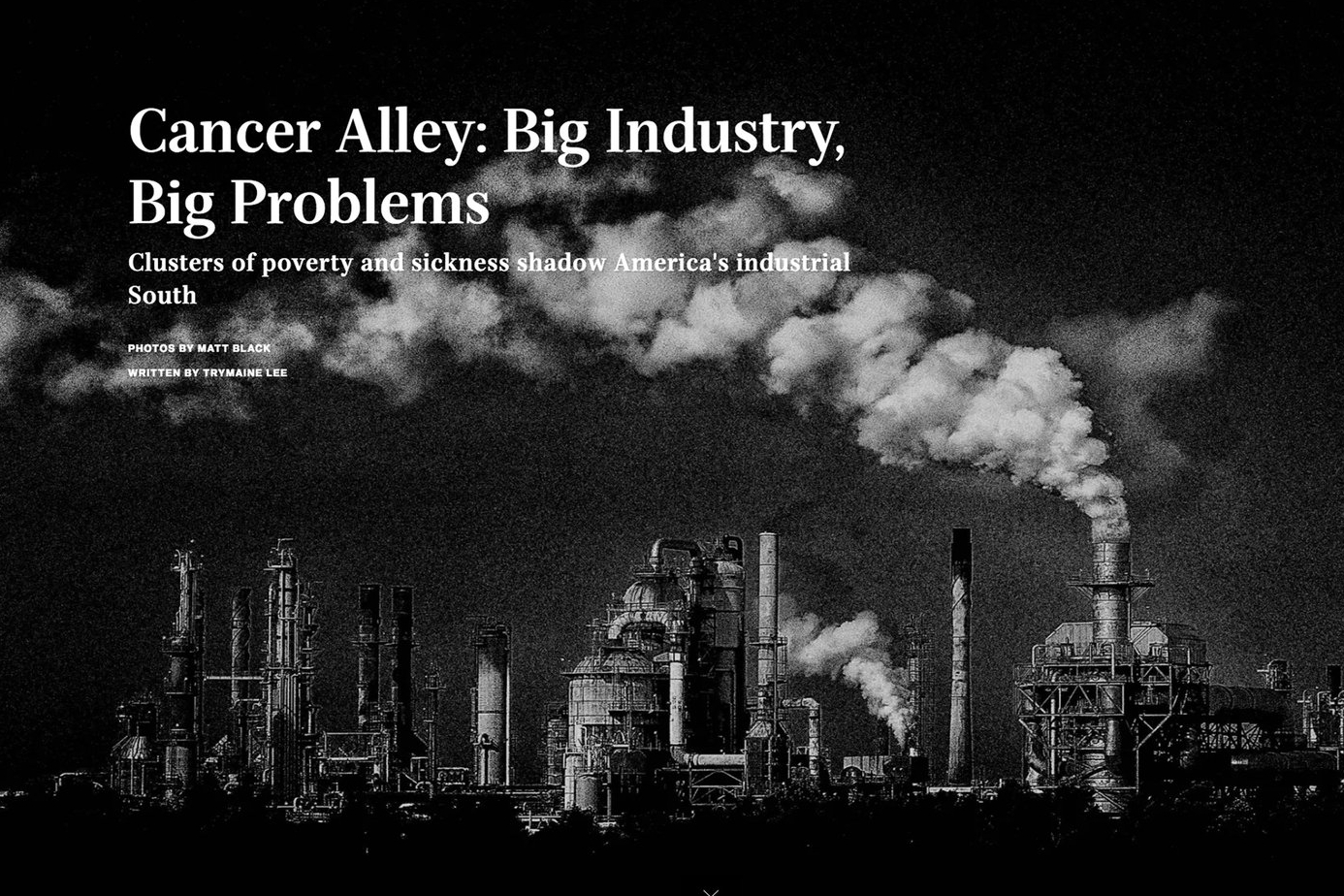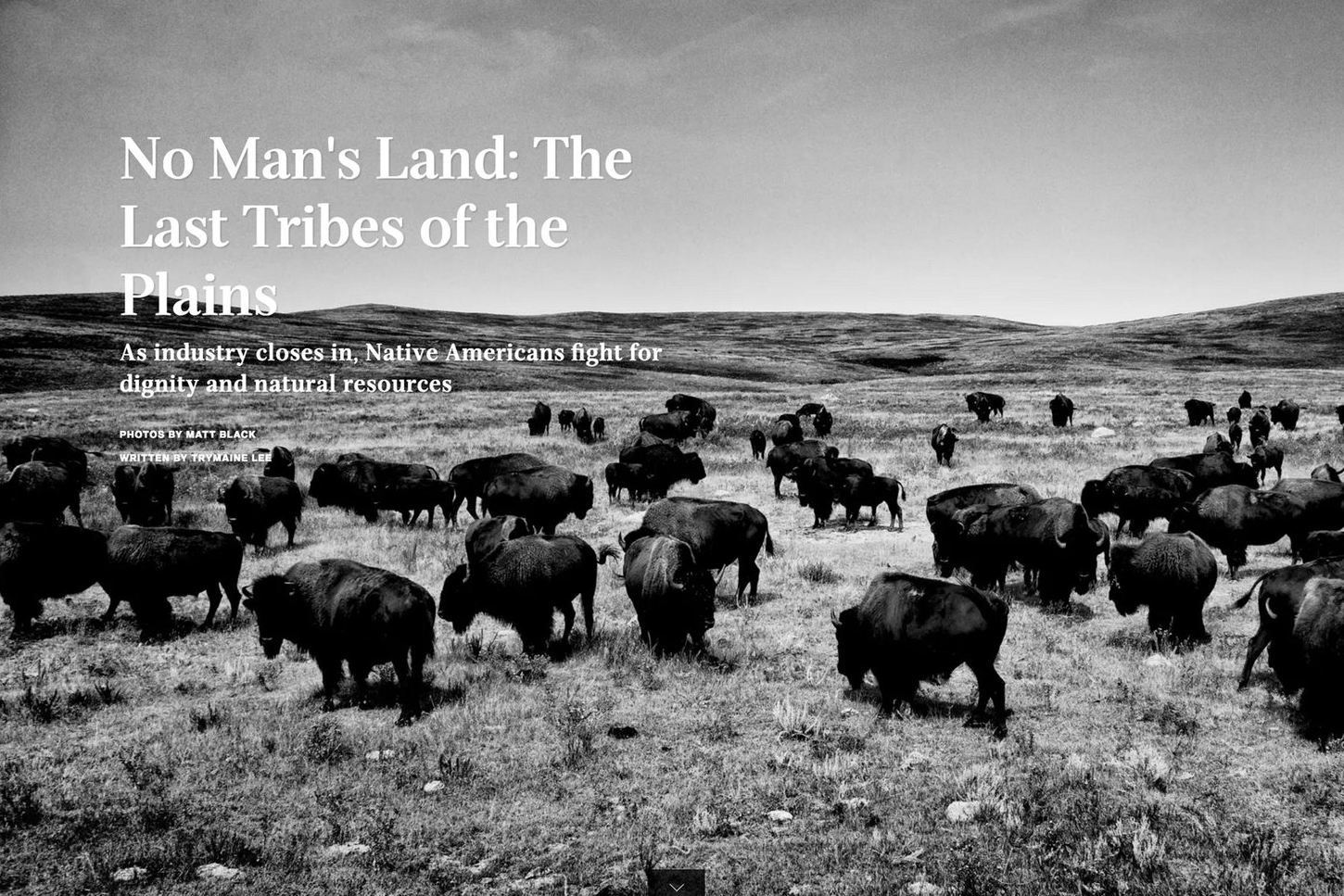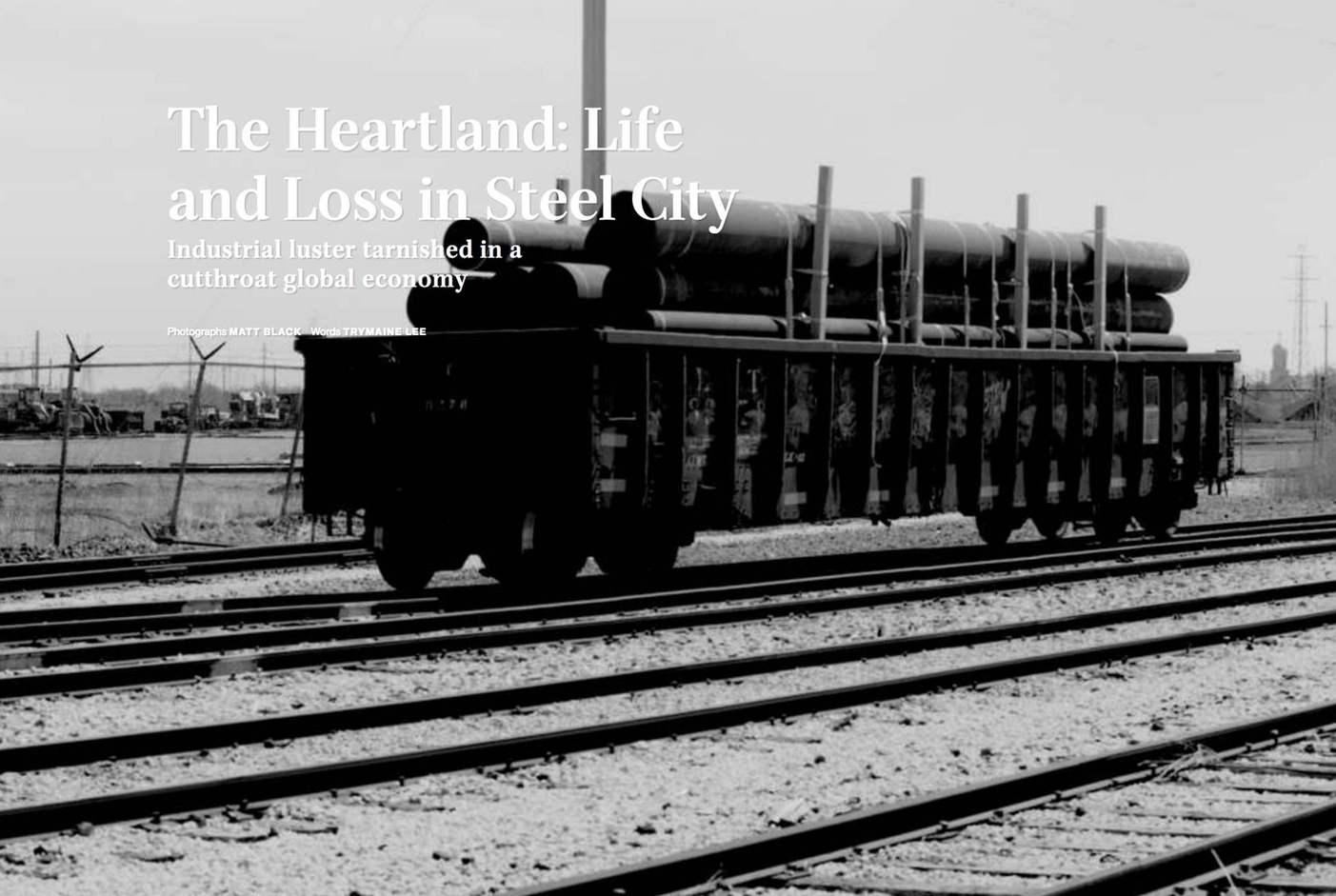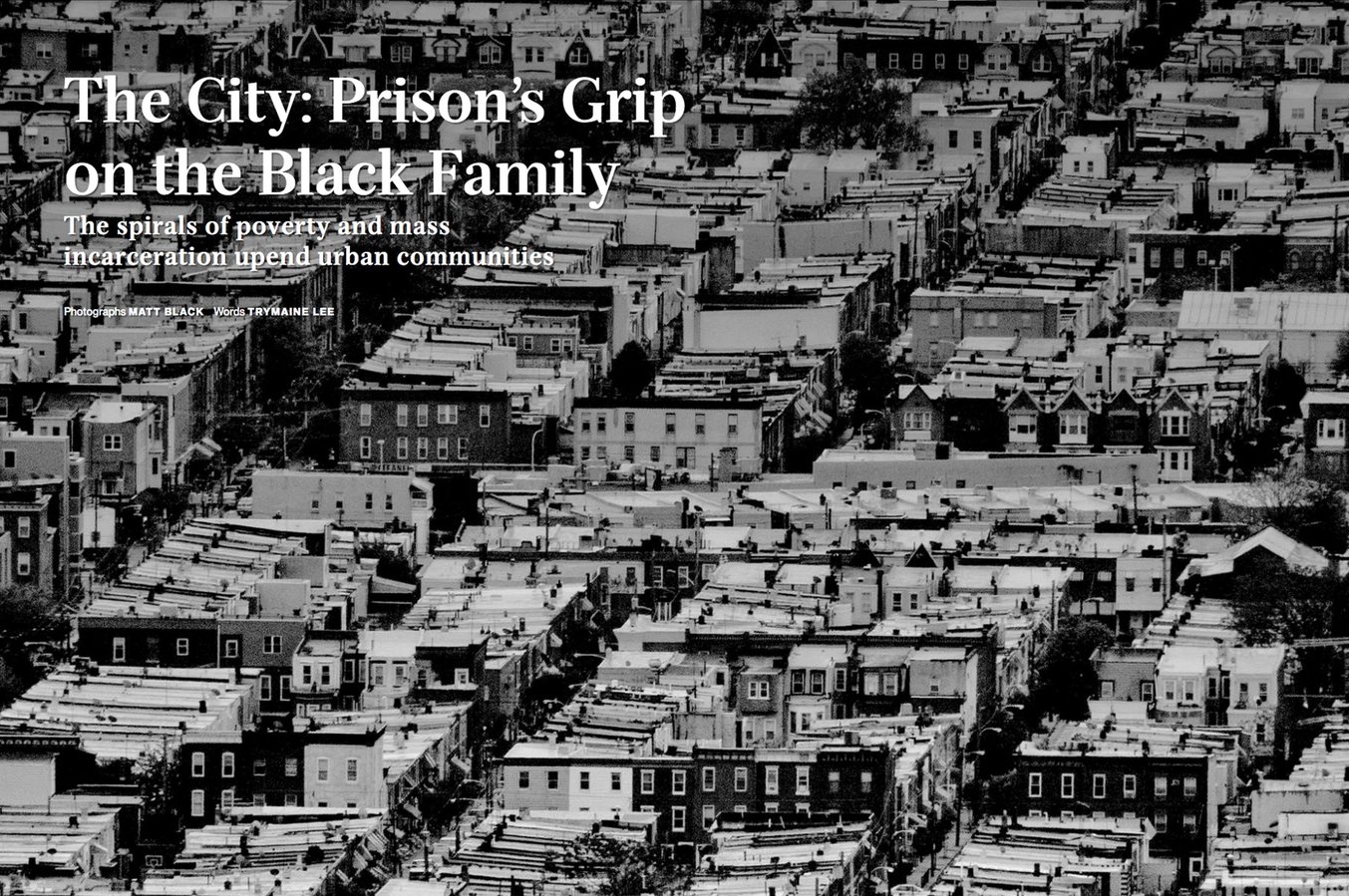GEOGRAPHY OF POVERTY
About the Project:
More than fifty years after LBJ declared the so-called ‘War on Poverty’, more than 43 million people are still living under the poverty line in one of the wealthiest and most powerful nations on earth. At the same time, the share of income going to the top 1% of the population has more than doubled since the 1970s. At the very top, the richest 0.1% share of the national wealth has tripled.
For more than six years, Magnum photographer Matt Black traveled over 100,000 miles crisscrossing the United States, documenting hundreds of the counties designated “poverty areas,” communities whose poverty rates are in excess of 20%. From the deserts of the Southwest through the black belt in the South to the post-industrial, rusting factory towns that dot the Midwest and Northeast, this important project profiles the country’s most marginalized people and communities. The Geography of Poverty stands as a singular document of a time in the United States of unprecedented economic divisions, affecting the experience, prospects, and outlook of millions who live in communities where prosperity has passed by. (Links to subsequent chapters can be found at the bottom of this page)
My Role:
In late 2014, Matt approached me about his project (he had already begun shooting in California's Central Valley and was publishing on Instagram. He wanted to expand the work and grow the project). MSNBC.com at that point had not published a project of this nature, scope, or depth, and did not have the platform to support an ambitious, multimedia digital presentation I felt it needed to do it justice. So, over the next six months, we worked on designing and hand-coding an immersive long-form microsite entirely from scratch, launching the first chapter in June 2015 and publishing six subsequent chapters over 2015 and 2016. We tailored the storytelling experience specifically for this project, creating a unique platform for the audience that highlights the photography, motion, interactive data visualization, and geotagged maps of the journey with data points and poverty statistics. The photographs were linked to Matt’s Instagram, where the audience could follow along in real-time as he traveled across the country. The results are affecting: if photography can help to humanize facts and numbers, the map would emphasize the scale of the problem, and the chapter features would draw attention to individual stories contextualizing the country-wide issues.
In my role as the Executive Producer and Director, I championed the work and persuaded the executives at MSNBC to support the project and commit time and resources to developing a bespoke microsite, I worked with Matt and our writer/reporter Trymaine Lee on establishing a framework for the long-form (including the overall editorial premise, story structures as well as setting benchmarks and the objectives for the project), I worked closely with the design and front-end development teams on both the aesthetic quality as well as the storytelling functionality, I helped secure additional funding and co-managed the outside project partnerships (with Magnum Foundation, Pulitzer Center for Crisis Reporting, and The Economic Hardship Reporting Project), I directed and edited all aspects of the visual content, created a social media campaign too engage audiences across MSNBC’s multiple platforms, I conceived, initiated, and led the production of a special zine print edition of Geography of Poverty. Publishing this project was very much a collaborative effort, and its considerable success is due to the contributions of the whole team that worked so hard to make it a reality.
Involvement
Executive Producer and Director
Client
MSNBC + TIME Magazine
Credits
Photographs by Matt Black
Written by Trymaine Lee
Designed by Mina Liu
Selected Honors
W. Eugene Smith Memorial Fund, Matt Black for "The Geography of Poverty”, 2015
Robert F. Kennedy Journalism Award, Matt Black for “The Geography of Poverty”, 2016
Partners
Pulitzer Center for Crisis Reporting
Magnum Foundation
Economic Hardship Reporting Project

